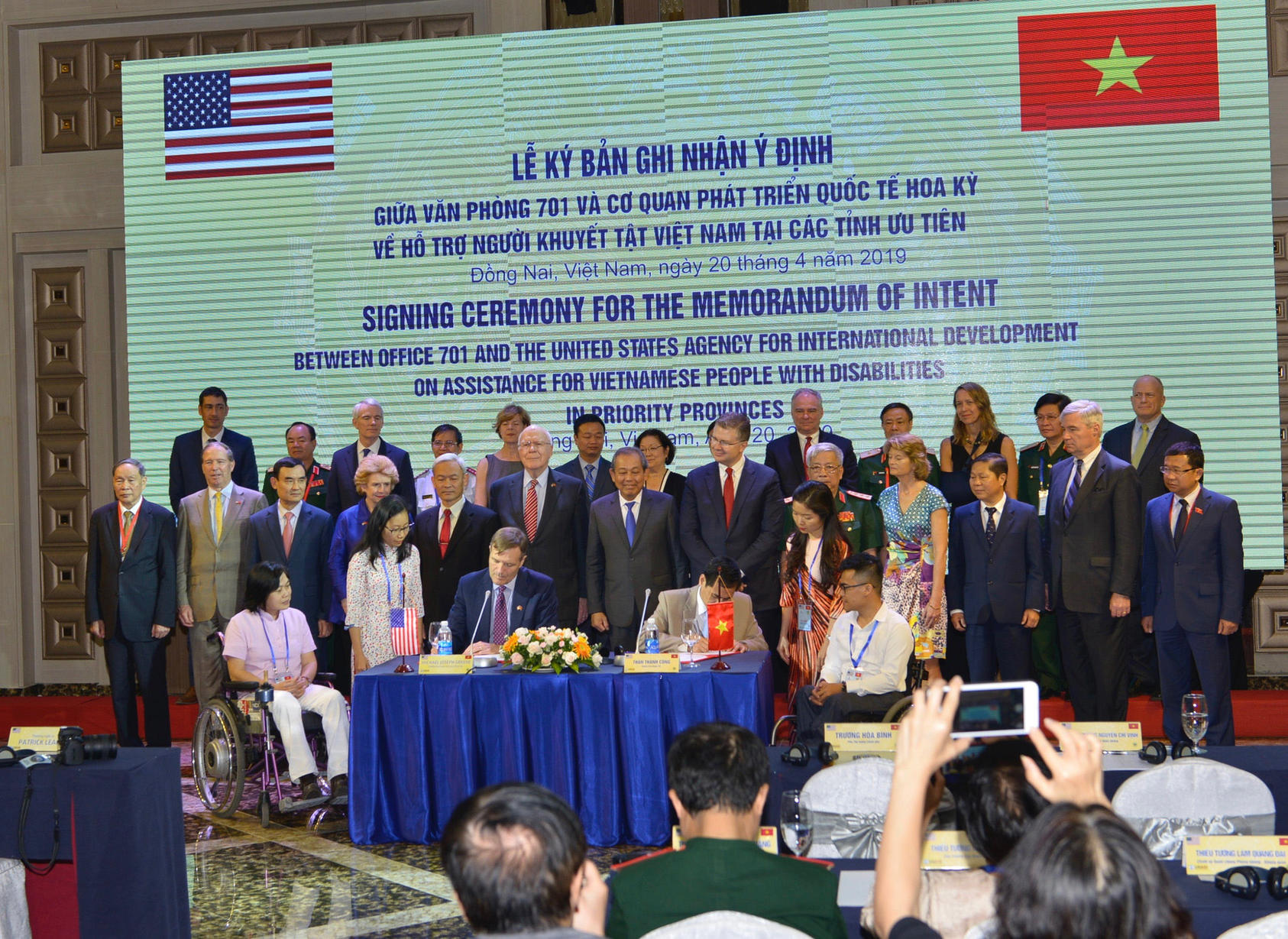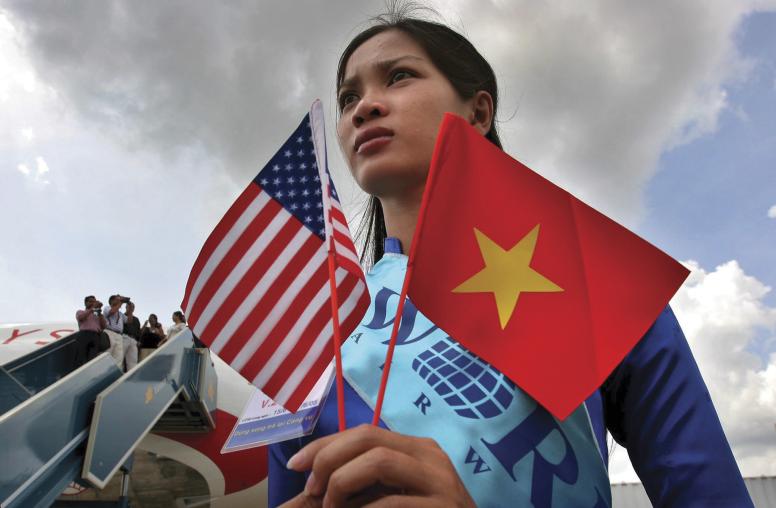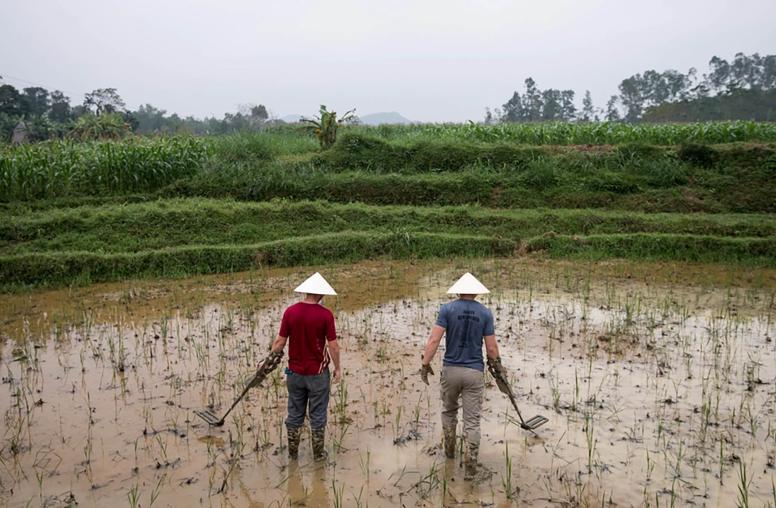Addressing the Harmful Legacy of Agent Orange in Vietnam
Progress seen as critical to a strong U.S.-Vietnamese partnership.
Nearly half a century since the end of the Vietnam War, there remains an urgent need for the United States and Vietnam to address the harmful legacy of Agent Orange, a defoliant sprayed by the U.S. military over parts of southern Vietnam, Laos and Cambodia — an area about the size of Massachusetts — that continues to this day to impact the health of local populations.

In recent decades, a new chapter in the U.S.-Vietnamese relationship has been marked by a focus on strategic cooperation, security and trade. Addressing the lingering effects of Agent Orange is an important aspect of this strengthened bilateral relationship as it facilitates “trust building and healing” between the United States and Vietnam, said Phan Xuân Dũng, a research officer at the Institute of Southeast Asian Studies – Yusof Ishak Institute in Singapore. “If the United States wants a strong strategic partnership with Vietnam, it is important that the United States shows a strong commitment to addressing war legacies in an earnest manner,” he added.
Dũng participated in a USIP virtual panel discussion. He was joined in the discussion by Charles Bailey, the Ford Foundation representative in Hanoi from 1997 to 2007 and co-author (with Lê Kể Sơn) of From Enemies to Partners: Vietnam, the U.S., and Agent Orange, and Susan Berresford, a former president of the Ford Foundation and former convenor of the U.S.-Vietnam Dialogue Group on Agent Orange/Dioxin. Andrew Wells-Dang, a senior expert on Vietnam who leads the Vietnam War Legacies and Reconciliation Initiative at USIP, moderated the discussion.
Obstacles to Reconciliation
The United States sprayed 19.5 million gallons of Agent Orange over the course of the Vietnam War. The goal was to deny Vietcong fighters and North Vietnamese troops forest cover and food supplies. “The Vietnam Red Cross estimates that three million Vietnamese have been affected by dioxin, including at least 150,000 children born after the war with serious birth defects,” said Wells-Dang, referring to the toxic chemical in Agent Orange. Hundreds of thousands of U.S. soldiers were also exposed.
Reconciliation on the issue of Agent Orange exposure has been hindered by three challenges, according to Dũng. First, U.S.-funded programs are currently limited to only eight of Vietnam’s 63 provinces and are more focused on capacity building than providing direct assistance. Second, the U.S. government has been reluctant to take formal responsibility for the use of Agent Orange, and its assistance does not reach all Vietnamese who were directly affected by the herbicide. And third, neither the U.S. government nor U.S. manufacturers have been held accountable in court for the harmful effects of Agent Orange.
Through its Vietnam initiative, Wells-Dang said, USIP aims to “contribute to a new dialogue on how the U.S. and Vietnam can move forward with closer cooperation, and even closure, on the Agent Orange legacy.”
The U.S. Response
The U.S. government has, to date, spent $400 million to address the environmental and health effects of Agent Orange. A greater emphasis has been placed on environmental cleanup. This includes $112 million spent on environmental remediation at the Danang airport jointly with Vietnam’s Ministry of Defense and $183 million so far on the cleanup project begun in 2020 at Bien Hoa, the largest remaining Agent Orange hot spot in Vietnam. More than $125 million in assistance has been provided to persons with disabilities in Vietnam since 1991.
U.S. assistance is not explicitly linked to Agent Orange. In fact, the United States and Vietnam do not yet have an agreement on what defines a person affected by Agent Orange. U.S. government statements note that disability assistance is being provided “regardless of cause,” on the basis that it is hard to prove that disabilities caused in a person are a consequence of Agent Orange exposure.
Vietnamese, Dũng said, see a double standard in this position because U.S. veterans have received benefits for presumed Agent Orange-related health conditions. “Treating all victims equally is just a moral thing to do,” Dũng said, adding, “If both countries can do this, it will be a big step toward a mutual understanding of history, which provides a springboard for more profound reconciliation.”
Bailey agreed. “It is time to retire the phrase ‘regardless of cause’ and replace it with something that both sides can agree on,” he said. “The whole subject of who are the people affected by Agent Orange and who is to benefit from this funding requires further thought and discussion by both countries. How can American health and disability assistance both have the best impact and be the most meaningful for Vietnamese people?” Bailey asked.
A New Generation
In Congress, U.S. Sen. Patrick J. Leahy (D-VT) has been a champion for those living with the effects of Agent Orange. For example, in 2019, USAID made a five-year commitment to provide another $65 million in aid to Vietnamese with disabilities in areas that were sprayed with Agent Orange or otherwise became contaminated by dioxin; these funds are channeled through the Leahy War Victims Fund, named for the Vermont Democrat. Leahy’s impending retirement this year raises questions about who will pick up that baton.
“We need a new generation of key actors who care about resolving this legacy and understand why we need to continue providing assistance to the victims,” said Dũng.
Dũng, who was born after the end of the Vietnam War, grew up on stories from his father about the war. A North Vietnamese soldier, Dũng’s father witnessed planes spraying herbicides very close to where he was deployed. “Today, he still remembers vividly that haunting image and the fear of being exposed to toxic chemicals he felt back then,” said Dũng. His father does not suffer from health effects associated with dioxin.
In the United States, Berresford said, a younger generation of Vietnamese Americans that are aware of the history of the war is ready to engage on this issue. These younger people, Bailey added, mobilize money within communities in the United States and see that it is used effectively in Vietnam.
Keeping the Issue on the Radar
Berresford cited the need for a coalition of U.S. and Vietnamese victims of Agent Orange, Vietnamese Americans and the U.S. veteran community to encourage philanthropic organizations to work on the issue of Agent Orange. Reflecting on past efforts, she noted the importance of plans, pressure and principals. “One shortcoming of our efforts was our inability to frame plans that both sides would agree would constitute an acceptable solution to the Agent Orange/dioxin war legacy,” she said. Second, she said, “we felt no pressure for mobilization to find a solution. We were not pressed hard by U.S. military people, State Department diplomats, citizen groups, or the Vietnamese-American community.” And third, given the sensitivity of the issue, it was not easy to recruit principals who could commit the money that would be needed in a significant plan.
Pointing to the generational impact of Agent Orange, Dũng said: “The truth is there is no timeline for when the health effects of Agent Orange stop.” He emphasized the importance of striking a balance between capacity building and providing direct assistance to those living with the effects of Agent Orange. “It is not just an issue of development assistance. It is about resolving a legacy between the two countries so that we can have amicable and long-lasting friendship,” Dũng said. “It is essentially about investing in our future.”



